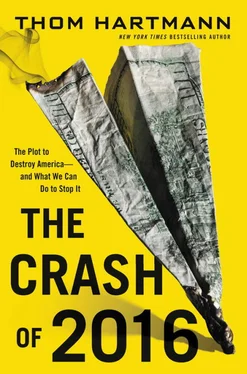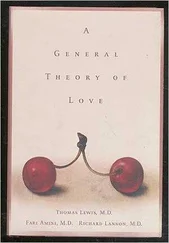But progressive taxation provides another benefit to the middle class.
Step Two: A Social Safety Net
With more revenue coming in to the government thanks to progressive taxation, the middle class can be protected by a strong social safety net.
In announcing his third run for the White House in 1912, President Teddy Roosevelt laid out the basis for what would become the New Deal a generation later. He named it the “Square Deal,” and said:
We stand for a living wage… [which] must include:
Enough to secure the elements of a normal standard of living;
A standard high enough to make morality possible;
To provide for education and recreation;
To care for immature members of the family;
To maintain the family during periods of sickness;
And to permit of reasonable saving for old age.
With the Social Security Act of 1935, FDR created Social Security and laid the groundwork for states to implement unemployment insurance programs, borrowing some of the policies in his cousin Teddy’s Square Deal. For the first time, our nation’s elderly population could enjoy a decent quality of life after retirement and be reassured that those who fell on hard times and lost their jobs wouldn’t be swept into destitution.
In his 1936 Democratic National Convention speech—the same speech in which he first called out the Economic Royalists—Franklin Roosevelt quoted an old English judge who once said, “Necessitous men are not free men.”
What Roosevelt was touching on was that if you have necessities that are not met—if you’re in need —then you’re not free. If you’re hungry and don’t have food, you’re not free. If you’re homeless, you’re not free. If you don’t have health care, you’re not free. If you don’t have a job, you’re not free.
Roosevelt went on to say, “Liberty requires opportunity to make a living—a living decent according to the standards of the time, a living which gives man not only enough to live by, but something to live for.” 55
For a middle class to take hold, basic necessities must be met. And so, in 1944, FDR went a step further and proposed a Second Bill of Rights. He explained the need for it by saying, “It is our duty now to begin to lay the plans and determine the strategy for the winning of a lasting peace and the establishment of an American standard of living higher than ever before known.” 56
He noted, “We cannot be content, no matter how high that general standard of living may be, if some fraction of our people—whether it be one-third or one-fifth or one-tenth—is ill-fed, ill-clothed, ill-housed, and insecure.”
And thus he proposed his Second Bill of Rights, which included the following:
The right to a useful and remunerative job in the industries or shops or farms or mines of the nation;
The right to earn enough to provide adequate food and clothing and recreation;
The right of every farmer to raise and sell his products at a return which will give him and his family a decent living;
The right of every businessman, large and small, to trade in an atmosphere of freedom from unfair competition and domination by monopolies at home or abroad;
The right of every family to a decent home;
The right to adequate medical care and the opportunity to achieve and enjoy good health;
The right to adequate protection from the economic fears of old age, sickness, accident, and unemployment;
The right to a good education.
FDR’s Second Bill of Rights never came to fruition. But in 1965, President Lyndon Johnson’s “Great Society” built upon FDR’s “New Deal” Social Security Act and created Medicare—a single-payer health care system for Americans sixty-five and older. And LBJ’s Great Society cut poverty in half in a decade.
After World War II, our nation spread freedom to more and more Americans by caring for one another and by everyone—even the rich, who paid an income tax rate over 70 percent after their first million or so and sometimes above 90 percent—pitching in to create a social safety net.
Then there was the GI Bill, which sent millions of young men like my dad to college and technical schools in the late 1940s and early 1950s.
What happened was that more and more Americans were free to chase down their dreams—to be artists and inventors, to find that perfect job, to teach and to build. They were free to spend more time with their families and to take vacations. The explosion of innovation and opportunity, and the rise of the American middle class, was the result of that freedom.
Step Three: Protections for Working People
When George Washington took office, remembering how difficult it was for him to find an American-made suit to wear to his inauguration, he tasked his treasury secretary, Alexander Hamilton, to come up with a plan to make America more self-sufficient—to produce its own goods and services and not have to rely on Britain anymore.
The full title of Hamilton’s plan was “Alexander Hamilton’s Report on the Subject of Manufactures: Made in His Capacity of Secretary of the Treasury.” In it, Hamilton proposed an eleven-point plan to foster American manufacturing. Once enacted, that plan transformed our nation from an infantile dependent into a world superpower.
The premise of the plan is so simple that I can sum it up in four words: “Put American manufacturing first.” This is done by giving American industries subsidies—or what Hamilton called “bounties”—to be globally competitive, and then protecting those industries by putting high tariffs—or taxes—on any new imports from foreign countries. The key to a good trade policy, just as in any business model, is to sell more stuff than you buy. So protect your sellers, and restrict the buying of things elsewhere if you can instead make them yourself. That was the basis of Hamilton’s plan.
This plan wasn’t anything new. Hamilton borrowed it from King Henry VII’s “Tudor Plan,” enacted in the fifteenth century to turn England into an economic powerhouse. And King Henry borrowed it from the Dutch, who borrowed it from the Romans, who borrowed it from the Greeks thousands of years ago. It’s a tried-and-true method for economic prosperity that has existed for thousands of years.
By the 1900s, the United States was emerging as an economic powerhouse in the global market, realizing Hamilton’s plan for producing and exporting more goods than we buy abroad.
A trade surplus of roughly $500 million in 1900 ballooned to $10 billion through the 1940s and ’50s. Thanks to Hamilton’s plan, the United States had built up an enormous manufacturing base that was able to sustain tens of millions of high-paying blue-collar jobs to produce the world’s goods—from refrigerators to clothes to cars.
In addition, the Wagner Act of 1935 guaranteed Americans the right to form a union and bargain collectively with their corporate employers in these now booming manufacturing plants. Prior to the Wagner Act, unions were practically unheard of. Even attempting to unionize in the workplace would get you fired, at best. At worst, it could get you killed.
But with these new protections in place, union membership grew from single-digit percentages to nearly a third of all American workers. And with the growth in unions, middle-class wages grew, too, and so did the middle class’s share of total national income.
The middle class thrived on a sturdy manufacturing base and strong labor unions negotiating fair wages.
Step Four: Rules in the Marketplace
The final step to securing a middle class is to set rules for the marketplace in order to keep the Royalists in business from getting too powerful and to prevent them from misbehaving.
Читать дальше












